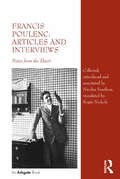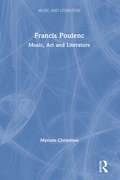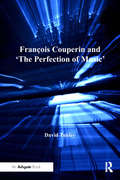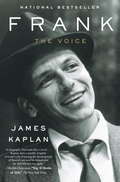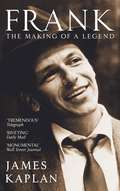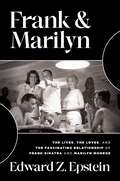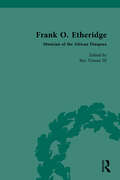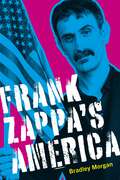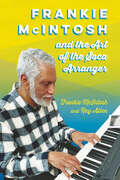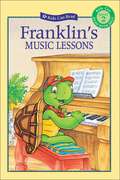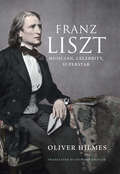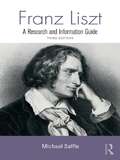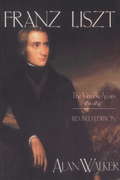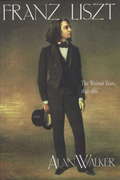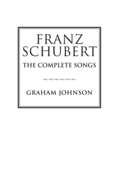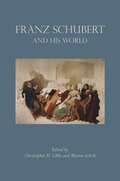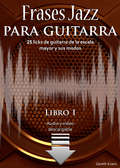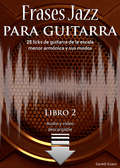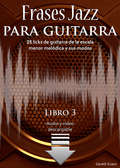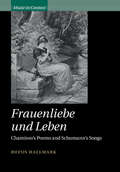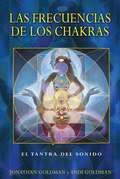- Table View
- List View
Francis Poulenc: Notes from the Heart
by Roger Nichols Nicolas Southon’He plays the piano well,’ wrote the society hostess Mme de Saint-Marceaux in her diary on 18 March 1927. ’His compositions are not devoid of talent but he’s not a genius, and I’m afraid he thinks he is.’ Intelligent though the lady was, she got this one spectacularly wrong. Poulenc has in fact outpaced his colleagues in Les Six by many a mile, as singers and instrumentalists all over the world will attest, and while he would never have accepted the title of ’genius’, preferring ’artisan’, a genius is increasingly what he appears to have been. Part of the answer lay in always being his own man, and this independence of spirit shows through in his writings and interviews just as brightly as in his music, whether it’s boasting that he’d be happy never to hear The Mastersingers ever again, pointing out that what critics condemn as the ’formlessness’ of French music is one of its delights, voicing his outrage at attempts to ’finish’ the Unfinished Symphony, writing ’in praise of banality’ - or remembering the affair of Debussy’s hat. And in every case, his intelligence, humour and generosity of spirit help explain why he was so widely and deeply loved. This volume comprises selected articles from Francis Poulenc: J’écris ce qui me chante (Fayard, 2011) edited by Nicholas Southon. Many of these articles and interviews have not been available in English before and Roger Nichols's translation, capturing the very essence of Poulenc’s lively writing style, makes more widely accessible this significant contribution to Poulenc scholarship.
Francis Poulenc: Music, Art and Literature
by Sidney Buckland; Myriam ChimènesThis collection of essays provides vivid new insights into Poulenc‘s world, his particular rapport with painters, writers and fellow musicians, and with the socialte who promoted his music through their salons. Contributions from international Poulenc scholars include the influence of various artists on his music, the nature of his affinity for Eluards poetry, his response to texts by Cocteau and Bernanos, and his constant search for suitable libretti. New light is thrown on two friendships, the first with his childhood friend Raymonde Linossier who introduced him to the world of books, the second to his teacher Charles Koechlin who greatly influenced his choral style. A detailed study is also provided of Poulenc‘s four choral works with orchestra. Finally, the reader is allowed a rare view of Poulenc at the microphone, not as interviewee but as radio presenter, in his 1947-1949 series of programmesA bâtons rompus.
François Couperin and 'The Perfection of Music'
by David TunleyFrançois Couperin's contribution to the literature of baroque keyboard music has long been recognized. François Couperin and 'The Perfection of Music' updates and expands upon David Tunley's valuable 1982 BBC Music Guide to the composer, and examines the whole of Couperin’s output including the organ masses, motets and chamber music, in addition to the well-known works for harpsichord. Taking as its focal point Couperin's concept of the perfection of music through the union of the French and Italian styles, this book takes a more analytical approach to Couperin's work. Early chapters outline the main contrasting features of the two schools in the seventeenth- and early eighteenth-centuries, and it becomes clear that Couperin's expressive power owed much to his fusion of the polarities of the French classical tradition with that of the Italian baroque. The book features a number of appendices, including the prefaces to Couperin's work both in the original French and in English translation, and a glossary of dances of the French baroque.
Frank
by James KaplanBestselling author James Kaplan redefines Frank Sinatra in a triumphant new biography that includes many rarely seen photographs. Frank Sinatra was the best-known entertainer of the twentieth century--infinitely charismatic, lionized and notorious in equal measure. But despite his mammoth fame, Sinatra the man has remained an enigma. As Bob Spitz did with the Beatles, Tina Brown for Diana, and Peter Guralnick for Elvis, James Kaplan goes behind the legend and hype to bring alive a force that changed popular culture in fundamental ways. Sinatra endowed the songs he sang with the explosive conflict of his own personality. He also made the very act of listening to pop music a more personal experience than it had ever been. In Frank: The Voice, Kaplan reveals how he did it, bringing deeper insight than ever before to the complex psyche and turbulent life behind that incomparable vocal instrument. We relive the years 1915 to 1954 in glistening detail, experiencing as if for the first time Sinatra's journey from the streets of Hoboken, his fall from the apex of celebrity, and his Oscar-winning return in From Here to Eternity. Here at last is the biographer who makes the reader feel what it was really like to be Frank Sinatra--as man, as musician, as tortured genius.From the Hardcover edition.
Frank: The Making of a Legend
by James Kaplan'At last, Sinatra has the biography he deserves' - The Irish TimesFrank Sinatra was the best-known entertainer of his century - infinitely charismatic, more legendary and notorious than any other public personality of his era. But no matter what you think, you don't know him.In this critically acclaimed biography, James Kaplan reveals how Sinatra made listening to pop music a more personal experience than it had ever been. We relive the years 1915 to 1954 in vibrant detail, experiencing as if for the first time Sinatra's journey from the streets of Hoboken, his fall from the summit of celebrity, and his Oscar-winning return in From Here to Eternity. Here is the book that, finally, gets under his skin.
Frank
by Jon RonsonFrom the bestselling author of The Psychopath Test comes a characteristically humorous story of a musician on the margins. In Frank: The True Story that Inspired the Movie, Jon Ronson reflects on his days playing keyboard for the Frank Sidebottom Oh Blimey Big Band. Frank Sidebottom, best known for performing with a big fake head with a cartoon face painted on it, was a cult favorite in the United Kingdom and is the subject of the new movie Frank, co-written by Ronson and starring Michael Fassbender, Maggie Gyllenhaal, and Domhnall Gleeson.
Frank & Marilyn: The Lives, the Loves, and the Fascinating Relationship of Frank Sinatra and Marilyn Monroe
by Edward Z. EpsteinFrank Sinatra! Marilyn Monroe! Never before teamed in a book, yet theirs was a seven-year friendship and on-and-off intimate relationship shrouded in secrecy and fraught with danger.Frank Sinatra and Marilyn Monroe—here is the first book to bring these two all-American icons together. Their friendship and on-and-off intimate relationship, kept secret because of powerful others in their lives, spanned seven tumultuous years. At one point, he even proposed marriage. In Frank & Marilyn, we follow Sinatra and Monroe from one explosive relationship to another, their marriages and love affairs eventually leading to a tangled relationship with each other, sparking a nasty rivalry between Frank and Marilyn&’s ex-husband (and one-time friend of Frank), Joe DiMaggio. Frank and Marilyn&’s ultimately disastrous relationship with John F. Kennedy, his brother Robert, and their often ruthless family was a fatal move for Marilyn. Her death remains a controversial topic to the present day. Dedicated biographer and entertainment world insider Edward Z. Epstein has spoken with many people who were familiar with the pair, all of whom talked about the Frank and Marilyn they knew—and the dangers they faced. It&’s a fascinating, largely untold story that&’s usually glossed over…until now.
Frank O. Etheridge: Musician of the African Diaspora
by Ben VinsonThis is a book by and about Frank O. Etheridge, an African-American musician from an age of cultural explosion. The decade after World War II saw the coming-of-age of marginalized cultures, and in North America a new voice emerged among peoples of African descent. Etheridge performed in a period when some of the greatest cultural producers of the African-American heritage assumed center-stage. From Shanghai to Singapore; from India to Africa and beyond, Frank Etheridge left us a detailed record of his travels in his unpublished manuscript. The book contains his views, insights, and international itinerary during the 1920s. His book is an important volume in the annals of African-American history, not just for its content, but for what it means and symbolizes. Its readers will journey with him, see through his eyes, understand race and racial prejudice as lived in ordinary skin, and sample culture. Some of Etheridge’s reflections and personal biases will seem like unpleasant contradictions from the way we think about racial prejudice today. However, these jarring moments of dissonance are rich learning opportunities that will connect us to his times, while unraveling a greater understanding of ourselves in our current moment. This manuscript, published for the first time, will be accompanied by editorial commentary written by Professor Ben Vinson III, and will be of great interest to students and scholars of African American history.
Frank Zappa and the And (Ashgate Popular and Folk Music Series)
by Paul CarrThis collection of essays, documented by an international and interdisciplinary array of scholars, represents the first academically focused volume exploring the creative idiolect of Frank Zappa. Several of the authors are known for contributing significantly to areas such as popular music, cultural, and translation studies, with expertise and interests ranging from musicology to poetics. The publication presents the reader with an understanding of the ontological depth of Zappa's legacy by relating the artist and his texts to a range of cultural, social, technological and musicological factors, as encapsulated in the book's title - Frank Zappa and the And. Zappa's interface with religion, horror, death, movies, modernism, satire, freaks, technology, resistance, censorship and the avant-garde are brought together analytically for the first time, and approached non chronologically, something that strongly complies with the non linear perspective of time Zappa highlights in both his autobiography and recordings. The book employs a variety of analytical approaches, ranging from literary and performance theory, 'horrality' and musicology, to post modern and textually determined readings, and serves as a unique and invaluable guide to Zappa's legacy and creative force.
Frank Zappa's America
by Bradley MorganFrom his early albums with the Mothers of Invention, Frank Zappa established a reputation as a musical genius who pushed the limits of culture throughout the 1960s and 1970s, experimenting with a blend of genres in innovative and unheard-of ways. Not only did his exploratory styles challenge the expectations of what popular music could sound like, but his prolific creative endeavors also shaped how audiences thought about the freedom of artistic expression. In Frank Zappa’s America, Bradley Morgan casts the artist as an often-misunderstood figure who critiqued the actions of religious and political groups promoting a predominantly white, Christian vision of the United States. A controversial and provocative satirist, often criticized for the shocking subject matter of his songs, Zappa provided social commentary throughout his career that spoke truth to power about the nefarious institutions operating in the lives of everyday Americans. Beginning in the late 1970s, his music frequently addressed the rise of extremist religious influence in American politics, specifically white Christian nationalism. Despite commercial and critical pressure, Zappa refused to waver in his support for free speech during the era of Reagan and MTV, including his pointed testimony before the U.S. Senate at the Parents Music Resource Center (PMRC) hearings. Throughout the 1980s, and until his death in 1993, Zappa crafted his art form to advocate for political engagement, the security of individual liberties, and the advancement of education. Music became his platform to convey progressive views promoting the rights of marginalized communities most at risk in a society governed by the principles of what he perceived as Christian radicalism. Frank Zappa’s America examines the musician’s messaging through song, tracing the means by which Zappa created passionate, at times troubling, art that combats conservativism in its many manifestations. For readers in the twenty-first century, his music and public advocacy demonstrate the need to preserve democracy and the voices that uphold it.
Frankie McIntosh and the Art of the Soca Arranger
by Frankie McIntosh Ray AllenSoca music, an offspring of older Trinidadian calypso, emerged in the late 1970s and is now recognized as one of the English-speaking Caribbean’s most distinctive styles of popular vocal music. Frankie McIntosh and the Art of the Soca Arranger tells a story of Caribbean music in the diaspora through the eyes and ears of a pioneering soca arranger. A fascinating collaboration between Frankie McIntosh and music scholar Ray Allen, this cowritten memoir places the music arranger at the center of several overlapping narratives of immigration and musical diaspora.The book begins with McIntosh’s personal voyage from Saint Vincent to Brooklyn and his efforts to hammer out a career in music while raising a family in his newly adopted home. His immigrant tale is intertwined with his musical journey, from popular Caribbean dance bands through formal studies in Western classical music and jazz to his work as a gigging jazz pianist and calypso/soca arranger. Along the way he embraced the varied musics of New York’s African American and West Indian communities, working with such iconic calypsonians as the Mighty Sparrow, Lord Kitchener, Calypso Rose, and Alston “Becket” Cyrus. His story provides a unique lens for viewing Brooklyn Carnival music and brings into focus the borough’s rise to prominence as the transnational hub of the soca music industry in the 1980s.An alternative to traditional scholarship that tends to focus on calypso and soca singers, this work explores the instrumental dimensions of the art form through the life and music of one of the most celebrated soca arrangers and keyboardists of all time.
Franklin's Music Lessons
by Paulette BourgeoisFranklin wants to play "Row, Row, Row Your Boat" on the piano, so he begins taking lessons. He learns the scales, but he would rather play baseball than practice. Will Franklin ever master the song? This Level 2 first reader contains longer stories, varied sentences, increased vocabulary, more difficult visual clues and some repetition.
Franz Liszt: Musician, Celebrity, Superstar
by Oliver Hilmes Stewart SpencerAn engrossing new biography of the musical revolutionary who was the world's first international megastar Hungarian composer Franz Liszt (1811-1886) was an anomaly. A virtuoso pianist and electrifying showman, he toured extensively throughout the European continent, bringing sold-out audiences to states of ecstasy while courting scandal with his frequent womanizing. Drawing on new, highly revealing documentary sources, including a veritable treasure trove of previously unexamined material on Liszt's Weimar years, best-selling author Oliver Hilmes shines a spotlight on the extraordinary life and career of this singularly dazzling musical phenomenon. Whereas previous biographies have focused primarily on the composer's musical contributions, Hilmes showcases Liszt the man in all his many shades and personal reinventions: child prodigy, Romantic eccentric, fervent Catholic, actor, lothario, celebrity, businessman, genius, and extravagant show-off. The author immerses the reader in the intrigues of the nineteenth-century European glitterati (including Liszt's powerful patrons, the monstrous Wagner clan) while exploring the true, complex face of the artist and the soul of his music. No other Liszt biography in English is as colorful, witty, and compulsively readable, or reveals as much about the true nature of this extraordinary, outrageous talent.
Franz Liszt: A Research and Information Guide (Routledge Music Bibliographies)
by Michael SaffleFirst published in 2009. Routledge is an imprint of Taylor & Francis, an informa company.
Franz Liszt and His World (The Bard Music Festival #17)
by Christopher H. Gibbs and Dana GooleyNo nineteenth-century composer had more diverse ties to his contemporary world than Franz Liszt (1811-1886). At various points in his life he made his home in Vienna, Paris, Weimar, Rome, and Budapest. In his roles as keyboard virtuoso, conductor, master teacher, and abbé, he reinvented the concert experience, advanced a progressive agenda for symphonic and dramatic music, rethought the possibilities of church music and the oratorio, and transmitted the foundations of modern pianism. The essays brought together in Franz Liszt and His World advance our understanding of the composer with fresh perspectives and an emphasis on historical contexts. Rainer Kleinertz examines Wagner's enthusiasm for Liszt's symphonic poem Orpheus; Christopher Gibbs discusses Liszt's pathbreaking Viennese concerts of 1838; Dana Gooley assesses Liszt against the backdrop of antivirtuosity polemics; Ryan Minor investigates two cantatas written in honor of Beethoven; Anna Celenza offers new insights about Liszt's experience of Italy; Susan Youens shows how Liszt's songs engage with the modernity of Heinrich Heine's poems; James Deaville looks at how publishers sustained Liszt's popularity; and Leon Botstein explores Liszt's role in the transformation of nineteenth-century preoccupations regarding religion, the nation, and art. Franz Liszt and His World also includes key biographical and critical documents from Liszt's lifetime, which open new windows on how Liszt was viewed by his contemporaries and how he wished to be viewed by posterity. Introductions to and commentaries on these documents are provided by Peter Bloom, José Bowen, James Deaville, Allan Keiler, Rainer Kleinertz, Ralph Locke, Rena Charnin Mueller, and Benjamin Walton.
Franz Liszt, Volume 1
by Alan WalkerThe first volume in Alan Walker's magisterial biography of Franz Liszt.
Franz Liszt, Volume 2
by Alan WalkerThe second volume in Alan Walker's magisterial biography of Franz Liszt.
Franz Liszt, Volume 3
by Alan WalkerThe third volume in Alan Walker's magisterial biography of Franz Liszt.
Franz Schubert: The Complete Songs
by Graham JohnsonThis three-volume boxed set is the definitive work on Franz Schubert’s vocal music with piano. A richly illustrated encyclopedia, these substantial volumes contain more than seven hundred song commentaries with parallel text and translations (by Richard Wigmore), detailed annotations on the songs’ poetic sources, and biographies of one hundred and twenty poets, as well as general articles on accompaniment, tonality, transcriptions, singers, and more. Written by Graham Johnson—celebrated accompanist, author, and the first pianist ever to record all of Schubert’s songs and part-songs—this sumptuous work is a must for performers, scholars, and all lovers of Schubert lieder.
Franz Schubert and His World (The Bard Music Festival #37)
by Christopher H. Gibbs and Morten SolvikThe life, times, and music of Franz SchubertDuring his short lifetime, Franz Schubert (1797–1828) contributed to a wide variety of musical genres, from intimate songs and dances to ambitious chamber pieces, symphonies, and operas. The essays and translated documents in Franz Schubert and His World examine his compositions and ties to the Viennese cultural context, revealing surprising and overlooked aspects of his music.Contributors explore Schubert's youthful participation in the Nonsense Society, his circle of friends, and changing views about the composer during his life and in the century after his death. New insights are offered about the connections between Schubert’s music and the popular theater of the day, his strategies for circumventing censorship, the musical and narrative relationships linking his song settings of poems by Gotthard Ludwig Kosegarten, and musical tributes he composed to commemorate the death of Beethoven just twenty months before his own. The book also includes translations of excerpts from a literary journal produced by Schubert’s classmates and of Franz Liszt’s essay on the opera Alfonso und Estrella. In addition to the editors, the contributors are Leon Botstein, Lisa Feurzeig, John Gingerich, Kristina Muxfeldt, and Rita Steblin.
Frases Jazz para guitarra: 25 licks de guitarra de la escala mayor y sus modos (Frases Jazz para guitarra #1)
by Gareth Evans25 frases originales de Jazz para guitarra de la escala mayor y sus modos en tablatura y notación. >> 117 compases de música a través de 25 frases (longitud promedio de las frases 4.68 compases) >> Vídeo a velocidad normal y audio a velocidad normal y media (descargable) >> Pistas de acompañamiento a velocidades de práctica normal y lenta (descargable) >> Diagramas de escala con consejos teóricos y técnicos para cada frase >> La tablatura de la guitarra tiene indicaciones para la púa y números de guía para los dedos Nota: El Libro electrónico incluye piezas musicales por lo que no es adecuado para pantallas pequeñas.
Frases Jazz para guitarra: 25 licks de guitarra de la escala menor armónica y sus modos (Frases Jazz para guitarra #2)
by Gareth Evans25 frases originales de Jazz para guitarra de la escala menor armónica y sus modos en tablatura y notación. >> 120 compases de música a través de 25 frases (longitud promedio de las frases 4.8 compases) >> Vídeo a velocidad normal y audio a velocidad normal y media (descargable) >> Pistas de acompañamiento a velocidades de práctica normal y lenta (descargable) >> Diagramas de escala con consejos teóricos y técnicos para cada frase >> La tablatura de la guitarra tiene indicaciones para la púa y números de guía para los dedos Nota: El Libro electrónico incluye piezas musicales por lo que no es adecuado para pantallas pequeñas.
Frases Jazz para guitarra: 25 licks de guitarra de la escala menor melódica y sus modos (Frases Jazz para guitarra #3)
by Gareth Evans25 licks originales de Jazz para guitarra de la escala menor melódica y sus modos en tablatura y notación. >> 118 compases de música a través de 25 frases (longitud promedio de las frases 4.72 compases) >> Vídeo a velocidad normal y audio a velocidad normal y media (descargable) >> Pistas de acompañamiento a velocidades de práctica normal y lenta (descargable) >> Diagramas de escala con consejos teóricos y técnicos para cada frase >> La tablatura de la guitarra tiene indicaciones para la púa y números de guía para los dedos Nota: El Libro electrónico incluye piezas musicales por lo que no es adecuado para pantallas pequeñas.
Frauenliebe und Leben: Chamisso's Poems And Schumann's Songs (Music In Context Ser.)
by Rufus HallmarkRufus Hallmark's book explores Robert Schumann's beloved yet controversial song cycle Frauenliebe und Leben and the poems of Adelbert von Chamisso on which it is based, setting them in the context of the challenges and social expectations faced by women in early nineteenth-century Germany. Hallmark provides the most extensive English-language study of Chamisso, a poet little known today outside Germany, including a biographical sketch and excerpts from his other poetry. He examines a range of poems about women, by Chamisso and others, and discusses the reception of the poetic and musical cycles, including illustrated editions, contemporary reviews, and other musical settings. Based on new studies of Schumann's manuscript sources and on comparative analyses of his songs and settings by Carl Loewe, Heinrich Marschner, Franz Lachner and others, Hallmark provides fresh musical and interpretive insights into each song.
Las frecuencias de los chakras: El tantra del sonido
by Andi Goldman Jonathan GoldmanCómo utilizar la ciencia de la sanación con sonidos para alcanzar un estado superior de la conciencia, fortalecer las relaciones, promover la unidad planetaria y contribuir a la sanación física y emocional • Ofrece ejercicios de respiración, entonación, sonidos sagrados y cánticos de mantras de las bijas para activar y balancear los chakras a fin de mejorar la salud y la armonía • Muestra cómo practicar la sanación con sonidos por cuenta propia o con un acompañante, para mejorar la comunicación, reducir el estrés y crear equilibrio y paz interior En esta guía detallada, Jonathan y Andi Goldman demuestran cómo la voz humana puede hacer que entren en resonancia nuestros cuerpos físicos y sutiles, con poderosos ejercicios que van desde los mantras de las bijas hasta sonidos vocálicos sagrados que balancean y alinean los chakras. Con ejercicios de respiración, entonación, cánticos de mantras y sonidos simientes, los autores indican cómo practicar la sanación con el sonido individualmente o con una pareja. Se incluyen además ejercicios con diapasones pitagóricos, cuencos de cristal, cuencos cantores y campanillas tibetanas.
